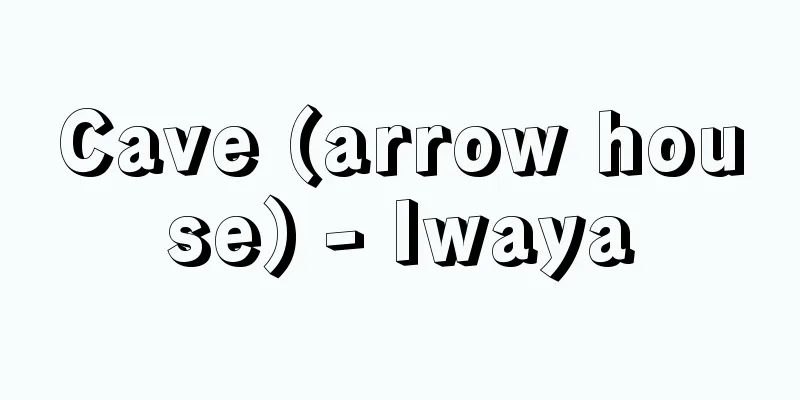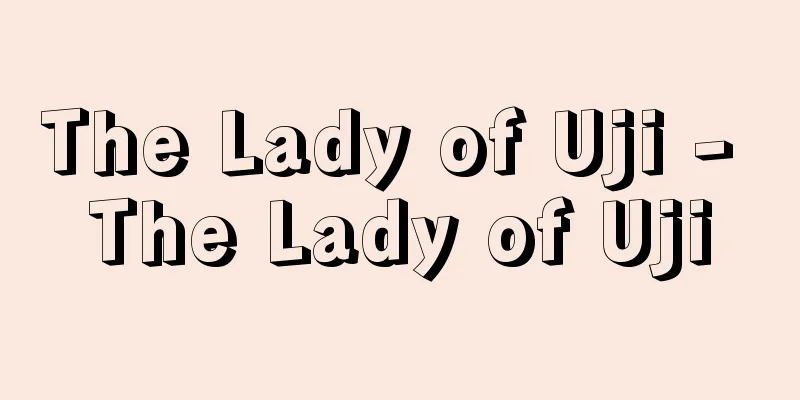Ashiya Doman

|
A fictional character. A priest and onmyoji who is said to have been active during the Heian period. Also called Doma. Tales of Doman appear in "Kojidan," "Uji Shui Monogatari," "Jikkunsho," and "Hosouki," and there are many legends about him throughout the country. What made Ashiya Doman famous was the Gidayu piece "Ashiya Doman Ouchi Kagami," written by the Joruri composer Takeda Izumo (first generation), which compiled and adapted the legends of Shinoda's wife, and was later made into a kabuki play called "Kuzunoha." In tales, he often appears as a character who competes in magic with the onmyoji Abe no Seimei. In the Konjaku Monogatarishu, the name of the priest Chitoku from Harima Province (Hyogo Prefecture) appears, who became Abe Seimei's apprentice after losing a contest in magic. However, many legends about Doman remain in Harima, and during the Muromachi period, onmyoji such as Ashiya Doka, Dodosen, and Dodozen were known to have lived in Harima, and this tradition continued into the early modern period. For the onmyoji of Harima, Doman's name was picked up and passed down as someone who spoke of a different lineage from the Abe and Kamo clans, who were onmyoji in the central area. Doman was also linked to another legendary religious figure in Harima, Hodo Sennin, and a legend was formed that made Doman a disciple of Hodo. Among the examples of folk religions in various regions, there are examples of star-shaped talismans called Doman talismans, and in the Shima region (Mie Prefecture) and elsewhere, they are used as talismans to ward off evil at entrances and as amulets for female divers, along with the Seman talisman (Seimei's seal) with nine characters written on it. <References> Hisao Tanaka, "Hodo Sennin and the Onmyoji of Harima" (edited by Shuichi Murayama et al., "Onmyodo Series," Volume 2) (Sekko Masaya) Source: Asahi Japanese Historical Biography: Asahi Shimbun Publications Inc. About Asahi Japanese Historical Biography |
|
架空の人物。平安時代に活躍したとされる法師陰陽師。道摩ともいう。『古事談』『宇治拾遺物語』『十訓抄』『峯相記』などに道満の説話がみえ,全国各地に様々な伝説を残す。蘆屋道満を有名にしたのは,信田妻の伝説を集成して脚色した浄瑠璃作者・竹田出雲(初代)作の義太夫で,のちに「葛の葉」として歌舞伎化された「蘆屋道満大内鑑」によるところが大きい。説話のなかでは陰陽師の安倍晴明と術競べをする人物として登場することが多い。『今昔物語集』では,安倍清明と術競べをして敗れ,弟子入りする播磨国(兵庫県)出身の法師の智徳の名がみえるが,道満にかかわる伝説は播磨に多く残り,室町期には蘆屋道薫,同道仙,同道善など陰陽師の居住が播磨で知られ,これは近世にも受け継がれた。播磨の陰陽師たちにとって,中央の陰陽師である安倍,賀茂両氏とは別系の由緒を語る人物として道満の名が取り上げられ,伝承されていったのであろう。また,道満をもうひとりの播磨の伝説的な宗教者・法道仙人とも結びつけ,道満を法道の弟子とする伝承ができあがっている。各地の民俗宗教の事例のなかで,星型の呪符をドーマン符と呼ぶ例があり,志摩地方(三重県)などでは九字を描いたセーマン符(晴明判)とともに,門口の魔除けや海女のお守りとして使用されている。<参考文献>田中久夫「法道仙人と播磨の陰陽師」(村山修一他編『陰陽道叢書』2巻)
(脊古真哉) 出典 朝日日本歴史人物事典:(株)朝日新聞出版朝日日本歴史人物事典について 情報 |
<<: Ashiya Doman Ouchi Kagami - Ashiya Doman Ouchi Kagami
>>: Ajātaśatru (English spelling)
Recommend
Cousins, A.
…Father and son, British watercolorists. The fath...
Republic of Sierra Leone (English spelling) Republic of Sierra Leone
…Official name: Republic of Sierra LeoneArea: 71,...
Japanese Common Toad (English name: Bufo japonicus japonicus)
A large toad (illustration) of the Bufonidae famil...
hepatic lobule
...There are also lymphatic vessels along the hep...
Mount Jinling
…It occupies a corner of the hills surrounding Na...
Epidendrum prismatocarpum - Epidendrum prismatocarpum
…It is widely distributed in Latin American count...
Flextime system - Flextime system
A working hours system in which workers are free t...
Mihail Sergeevich Gorbachyov
A politician from the late Soviet Union. Russian....
Hakkeburui - Hakkeburui
Also called "Shirakawa Family Burui." Ed...
monopoly capital
…The term “financial oligarchy” is often used in ...
Kingdom of Benin
Benin was founded in the 14th century in the trop...
Okinawa flying fox - Okinawa giant bat
...Banana plantations and other areas are heavily...
Drawing - Sakuzu
Creating a figure that satisfies given conditions...
Borgholm
...The population is about 20,000, and they are m...
Autumn leaf lettuce - Autumn leaf lettuce
An annual plant of the Asteraceae family (APG cla...









